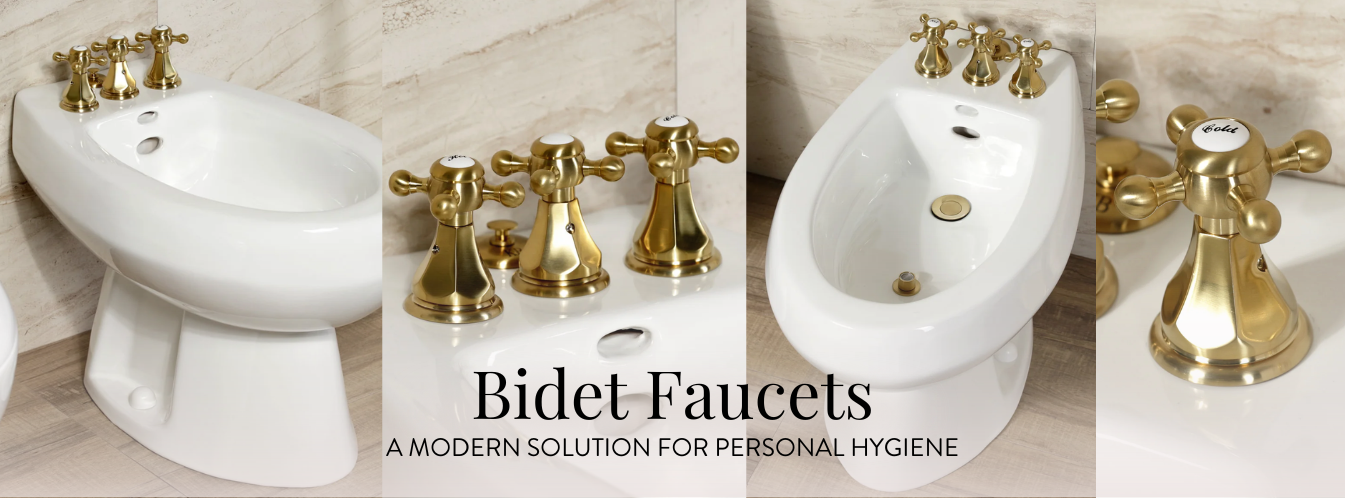Get [PRO] Pricing
Get [PRO] Pricing

Bidet faucets are good for a thorough and gentle cleaning experience, making them an attractive option if enhanced hygiene is the end goal. Understanding the origins and evolution of bidet technology will help explain how far these fixtures have come and understand why they are becoming a preferred choice in many households.
The concept of the bidet originated in France in the early 18th century, where it was initially a standalone basin used for personal cleansing. Over time, bidets became a standard fixture in European bathrooms, and have long been regarded as essential for maintaining cleanliness.
The emergence of bidet faucets has been driven by a growing awareness of their benefits and the desire for more sustainable and efficient bathroom solutions. In recent years, bidet faucets have gained popularity worldwide, particularly in regions like North America and Asia, where they were previously less common. This shift can be attributed to several factors, including the increasing emphasis on personal hygiene, environmental concerns about excessive toilet paper use, and the influence of global travel exposing people to different cultural practices.
As awareness and acceptance of bidet faucets continue to grow, they are becoming a staple in contemporary bathrooms, reflecting a broader trend toward modern technology and sustainability.
Comfort and convenience are major benefits of bidet faucets. These fixtures are designed to be user-friendly, with many models featuring adjustable water pressure and temperature settings. This allows users to customize their experience to suit their personal preferences. Bidet faucets are also beneficial for people of all ages and can significantly enhance accessibility and independence in the bathroom. For individuals recovering from surgery or childbirth, bidet faucets provide a gentle and effective way to clean without the discomfort of using toilet paper.
In addition to personal comfort, bidet faucets are an eco-friendly choice. By reducing the reliance on toilet paper, bidet faucets help conserve natural resources and decrease the environmental impact of paper production. The manufacturing and disposal of toilet paper contribute to deforestation, water consumption, and waste, making bidet faucets a more sustainable alternative. While bidet faucets do use water, the overall environmental footprint is often lower compared to the extensive resources required for toilet paper production and distribution. This makes bidet faucets an attractive option for environmentally conscious consumers looking to reduce their ecological impact.
Centurion KB6328EFL Three-Handle Vertical Spray Bidet Faucet with Brass Pop-Up
Concord KB6327DL Three-Handle Vertical Spray Bidet Faucet with Brass Pop-Up
Metropolitan KB327BX Three-Handle Vertical Spray Bidet Faucet with Brass Pop-Up
Victorian KB328AL Three-Handle Vertical Spray Bidet Faucet with Brass Pop-Up
Americana KB311 Three-Handle Deck Mount Bidet Faucet with Brass Pop-Up
Concord KB6322DX Three-Handle Vertical Spray Bidet Faucet with Brass Pop-Up
Duchess KB321AKL Three-Handle Vertical Spray Bidet Faucet with Brass Pop-Up
Kaiser KB6327CKL Three-Handle Vertical Spray Bidet Faucet with Brass Pop-Up
Legacy KB320LL Three-Handle Deck Mount Bidet Faucet with Brass Pop-Up